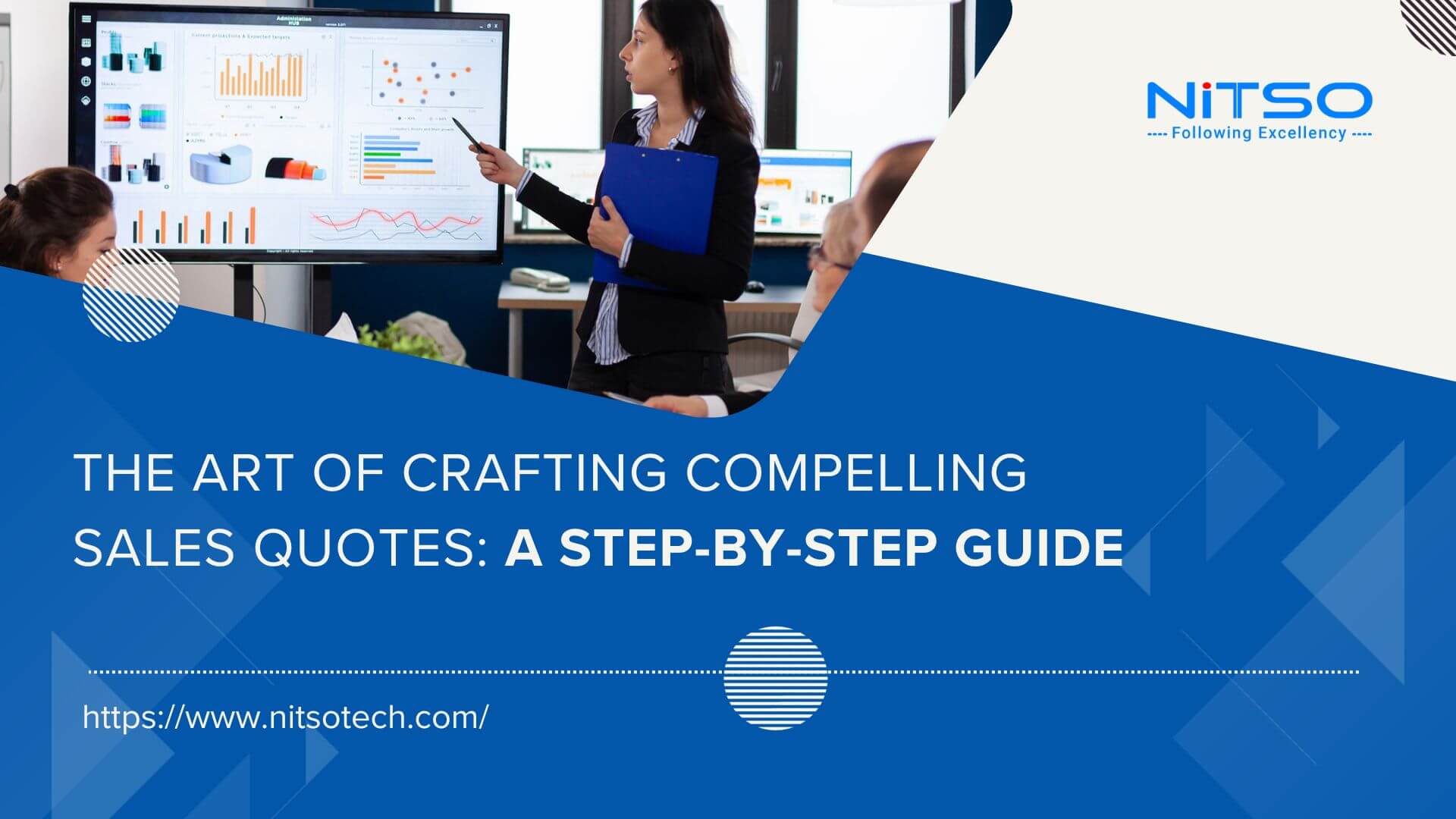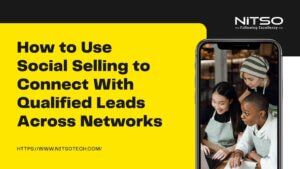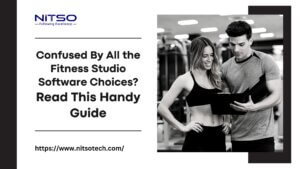According to HubSpot research, only 2% of sales happen on the first contact with a potential customer. Effective sales quote presentation is crucial for moving prospects through the pipeline to become customers.
A sales quote is a detailed proposal sent to a prospect outlining the products, services, terms and pricing you can provide if they become a customer. The quote is a pivotal step in the sales process when the prospect evaluates if working with your company is the right choice.
The way you present the sales quote can greatly impact whether the deal is closed or not. Utilizing strategies like customizing for the client, using visuals, and simplifying pricing gives your quotes the best chance at turning prospects into long-term customers. This article will explore the most effective techniques for sales quote presentation.
Table of Contents
Understand your customer and their needs
Before you even begin creating the sales quote, it is crucial to deeply understand who you are selling to. Conduct thorough research on the prospective company and the specific people you are looking to sell to. Learn as much as possible about their business, including their products/services, competitive landscape, goals, pain points and challenges. This will allow you to tailor and customize the sales quote specifically for that customer.
Reach out directly to the prospect to ask probing questions on what outcomes they desire, and what objections they may have. The more insights you can gather on the prospect’s needs, the better you can position your sales quote as the ideal solution. For example, if improving employee productivity is a goal, emphasize how your offering increases output. Or if reducing costs is crucial, quantify how your solution saves money.
Align each section of your sales quote to address the prospect’s goals and challenges directly. Demonstrate with facts, figures, and evidence how your products/services can get them the results they want. Focus on articulating the strongest business case of why your solution is the right fit. Avoid using a generic, one-size-fits-all quote template. Make sure your quotes resonate specifically with each prospect by customizing them based on your research into their needs. This level of personalization and relevance will make your sales quotes much more compelling.
Structure the sales quote for clarity
The way you organize and structure the actual content of the sales quote can greatly impact how easy it is for prospects to digest. Use these strategies to structure your sales quotes for maximum clarity:
- Overview Section – Begin the quote with a short executive summary that outlines the key details like products/services offered, pricing, and value proposition. This overview section makes it easy for busy prospects to quickly grasp the essence of your quote.
- Organized Sections – Break the quote down into logical sections with clear headings like “Proposed Solution”, “Pricing”, “Terms and Conditions”, etc. Organize the information from most to least important.
- Bullet Points – Within each section, use bullet points to list out information like product features, services included, pricing breakdowns, etc. Bullet points make the information scannable.
- Whitespace – Use a generous whitespace between sections and avoid dense blocks of text. White space makes the page appear less intimidating.
- Call-Out Boxes – Pull out and highlight key details like total costs, timelines, and deliverables in call-out boxes for easy reference.
- Visuals – Charts, graphs, or images to illustrate your offering make the quote more visually appealing.
This strategic structure allows customers to efficiently locate the most relevant information in your sales quote. A clear, organized quote builds credibility and professionalism.
Use compelling language and visuals
The language and visuals used in your sales quote should help persuade the prospect that your product or service is the best choice. Here are some tips:
- Customer-Focused Language – Use language that speaks directly to the customer’s needs identified during your research. Use “you” frequently and tie benefits back to their goals.
- Emotionally Compelling – Incorporate vivid language, analogies, and statistics that evoke emotion and demonstrate the value of your offering. Avoid boring or overly technical language.
- Social Proof – Include credible testimonials, case studies, or quotes that provide social proof of the results you have achieved for others.
- Branded Visuals – Use your brand colours, logo, and style to make the quote aesthetically pleasing. Illustrations, product photos, or charts add visual interest.
- Minimal Text – Balance text with negative space, visuals, and call-out boxes. Avoid dense blocks of text that are uninviting.
- Clear Calls-to-Action – Guide the prospect with clear CTAs like “Call today to discuss your needs”, or “Email us to request a quote”. Make it easy for them to engage.
An appealing, professional quote with compelling language and visuals will help convince prospects to buy from you. Invest time into creating quotes that win over customers both logically and emotionally.
Anticipate and address objections
Even the most compelling sales quotes will often face objections and hesitations from the prospect. Being proactive and addressing concerns in your quote shows you are a thoughtful partner.
- Research common objections prospects may have about your product/service, pricing, delivery, implementation etc.
- Proactively address these objections in the sales quote by calling them out and providing counter arguments.
- Offer concrete evidence, guarantees, or concessions to overcome hesitations.
- Ask the prospect directly about any reservations they may have and customize the quote to resolve those concerns.
- Quelling objections upfront builds trust and confidence in your solution.
Explain pricing and payment terms
The pricing and payment details outlined in your sales quote require special attention and clarity. An unclear or awkward pricing structure can derail an otherwise great sales quote. Use these best practices:
- Cost Breakdowns – Provide a detailed breakdown of all costs like unit price, total price, fees, taxes, and shipping. Give clear justifications for each charge so the customer perceives value.
- Flexible Pricing Models – Offer pricing models like one time purchases, monthly/annual subscriptions, scaled pricing tiers, usage-based, etc. Provide choices to find what fits their budget.
- Payment Schedule – Outline timelines for deposits, progress payments, and final payments. Offer instalment plans if needed to ease cash flow for the customer.
- Wide Payment Options – Accept seamless payment methods like cards, bank transfers, online payments, checks, etc. Make it easy for customers to pay you.
- Discounts – Highlight any special discounts, sales, or promotions to incentivize quick purchases. Discounts should have clear deadlines.
- Clear Terms – Explain returns, exchanges, warranties, and other terms and conditions related to pricing so customers have no surprise charges later.
Pricing is complex, so take time to create pricing proposals for your sales quotes that are transparent and easy to understand. Your goal is to not only provide value but to make the customer confident in investing in your solution.
Follow up and close
Closing the sale shouldn’t end when you send the quote. Follow up diligently after the prospect has time to consider your proposal. Use the follow-up as an opportunity to answer final questions, ask for the business, and seal the deal.
- Schedule a live meeting, call or demo to walk through the quote and answer any outstanding questions.
- Ask for the customer’s business and clearly explain the next steps and timeline if they are ready to move forward.
- If they need more time, set a date for follow-up and provide ways to contact you with any other questions in the meantime.
- Outline incentives or expiration dates if they commit within a certain timeframe.
- Thank them for their time and keep communication open until you achieve a “yes” or “no” final decision.
- Effective quote follow-up and closing skills will lead to higher conversion rates.
Key Insights
In summary, the way you present your sales quote can make or break whether you win the business. To be effective, first, thoroughly research the prospect to customize your quote to their specific needs and goals. Strategically structure the quote using an overview, sections, bullet points, and visuals so information is easy to digest. Use compelling and benefit-focused language paired with company branding to influence the customer emotionally. Clearly explain all pricing and payment terms so the customer has no hesitations or confusion.
An optimized sales quote presentation shows prospects you understand them, provides real value and builds trust in your solution. This leads to higher conversion rates and closed deals. If done right, an eloquent sales quote can turn prospects into lifelong customers.
We hope this overview gives you the tools to make every sales quote count. Please reach out with any questions and we look forward to partnering with you. The future growth of your business is our top priority.
FAQs Related to Sales Quote Presentation
How much detail should I include in a sales quote?
Include enough detail to fully explain your offering but not so much that it becomes overwhelming. Find the right balance of depth with clear summaries and visuals.
When should I follow up after sending a sales quote?
Follow up within a few days to a week after sending the quote. Check in to see if they have any questions and gauge their interest level.
Should I offer discounts in my sales quotes?
Discounts can incentivize prospects to close faster. But use them sparingly and don’t undercut your prices too heavily just to make a sale.
What visuals help strengthen sales quotes?
Charts demonstrating ROI, product photos, customer logos, illustrations of your service, and graphics with key stats help reinforce your offer visually.
How do I handle pricing objections in sales quotes?
Address concerns directly by justifying your costs, offering flexible payment options, or providing bundled packages with discounts to improve affordability.








0 Comments